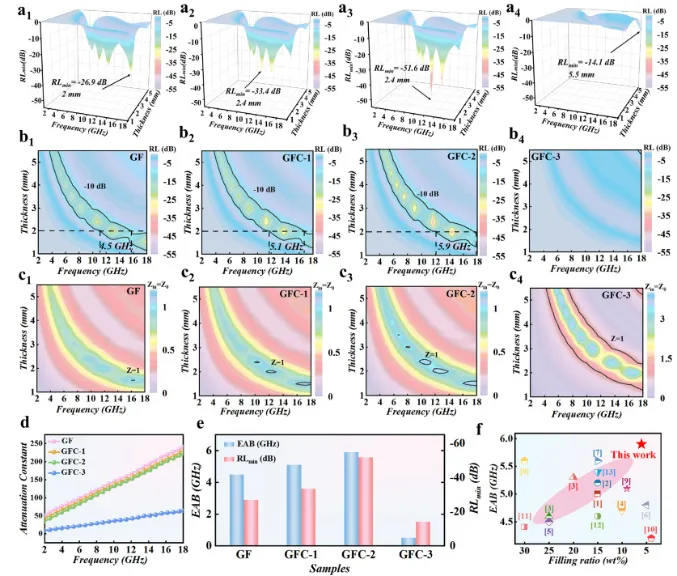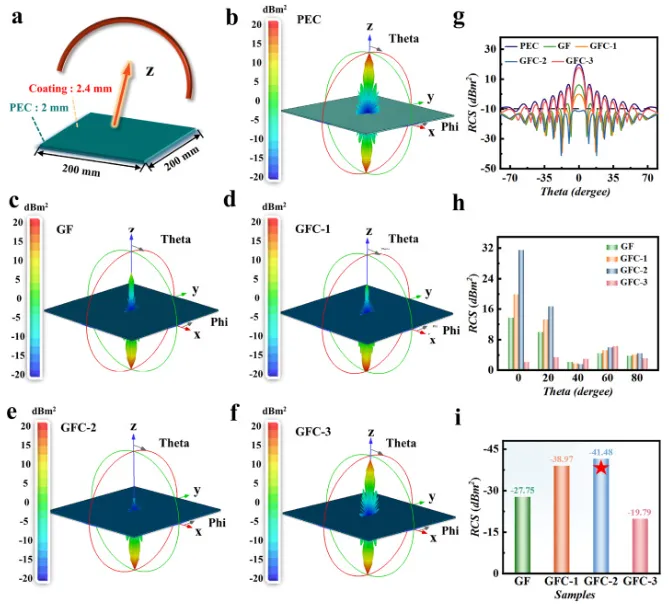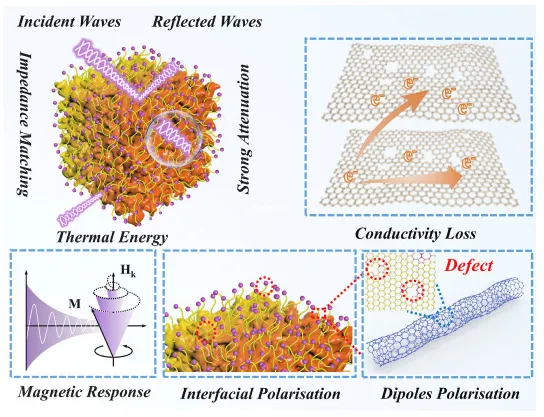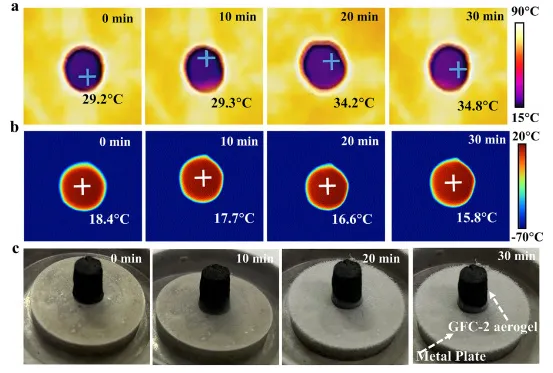Dalian University of Technology in Carbon: Graphene/MD@Carbon Nanotube Aerogels for Multifunctional and Highly Efficient Electromagnetic Wave Absorbers
1. Research Overview
Graphene aerogels, with their ultra-low density and excellent dielectric properties, are gaining attention in the field of electromagnetic wave (EMW) absorption. However, the loss mechanisms in pure graphene aerogels are limited, and it remains challenging to introduce multiple loss mechanisms while keeping the material lightweight. In this study, Professors Yuping Duan and Lujun Pan from Dalian University of Technology published a paper titled “Construction of rGO/MOF-derived CNTs aerogel with multiple losses for multi-functional efficient electromagnetic wave absorber” in Carbon. The research team used a hydrothermal treatment to uniformly combine GO and MOF particles, followed by in situ growth of CNTs via chemical vapor deposition (CVD), successfully constructing a reduced graphene oxide/metal-organic framework (MOF)-derived carbon nanotube (rGO/MD@CNTs) aerogel.
The interaction between GO and MOF particles forms strong bonding sites, creating an aerogel with excellent mechanical properties and magnetic loss capability. The MOF-catalyzed CNT growth contributes to interface and dipole polarization while effectively tuning the conductivity for improved impedance matching. With a filler loading of only 6 wt%, the aerogel achieved a remarkable reflection loss of -51.6 dB and a wide effective absorption bandwidth (EAB) of 5.9 GHz. Additionally, the aerogel demonstrates good thermal stability and frost resistance. This study provides an effective strategy for developing multi-loss aerogels for high-efficiency EMW absorption, showcasing the application potential of rGO/MD@CNTs aerogels in complex environments.
Visual Summary

- Figure 1: (a) Preparation schematic of rGO/MD@CNTs aerogel, (b) photograph of aerogel attracted by a magnet, (c) aerogel on a flower, (d) aerogel with water droplets (inset showing contact angle), and (e-h) compression and resilience photos.

- Figure 2: SEM and TEM images, as well as element distribution of GF and GFC-2.

- Figure 3: XRD, Raman, and XPS spectra, and N₂ adsorption-desorption curves of GF and GFC-x.

- Figure 4: 3D and 2D reflection loss plots, impedance matching, and RLmin and EAB comparison for GF and GFC-x.

- Figure 5: 3D RCS simulation plots and RCS reduction values for PEC, GF, and GFC-x.

- Figure 6: Schematic of the EMW dissipation mechanisms of rGO/MD@CNTs aerogel.

- Figure 7: Infrared images of GFC-2 at different heating and cooling times.
Summary
In summary, the rGO/MD@CNTs aerogel, synthesized through a hydrothermal reaction and in situ CVD growth, is lightweight, hydrophobic, and possesses excellent compressive strength. The interaction between GO and MOF particles ensures uniform MOF particle dispersion, enhancing mechanical properties. By adjusting the MOF particle content, the growth of CNTs in the aerogel can be controlled. The uniform CNT growth increases the specific surface area and introduces dipole and interfacial polarization. The rGO/MD@CNTs aerogel integrates multiple loss mechanisms, achieving lightweight and efficient EMW absorption. With a filler loading of only 6 wt%, the GFC-2 aerogel achieved a maximum reflection loss of -51.6 dB and an EAB of 5.9 GHz at a thickness of 2 mm, and an RCS value below -10 dBm² across all detection angles. Additionally, infrared imaging shows that rGO/MD@CNTs aerogel has good thermal insulation and frost resistance, enhancing its potential for multifunctional applications.
Reference: https://doi.org/10.1016/j.carbon.2024.119591

